A Chair for Fidgeting and a Table for Burning Intrusive Thoughts — Why This Designer Is Making Furniture for the Anxious Being
A nod to inclusive design, this three-piece exhibition is built on the concept of 'therapy furniture' and its subsequent message of comfort in the modern home

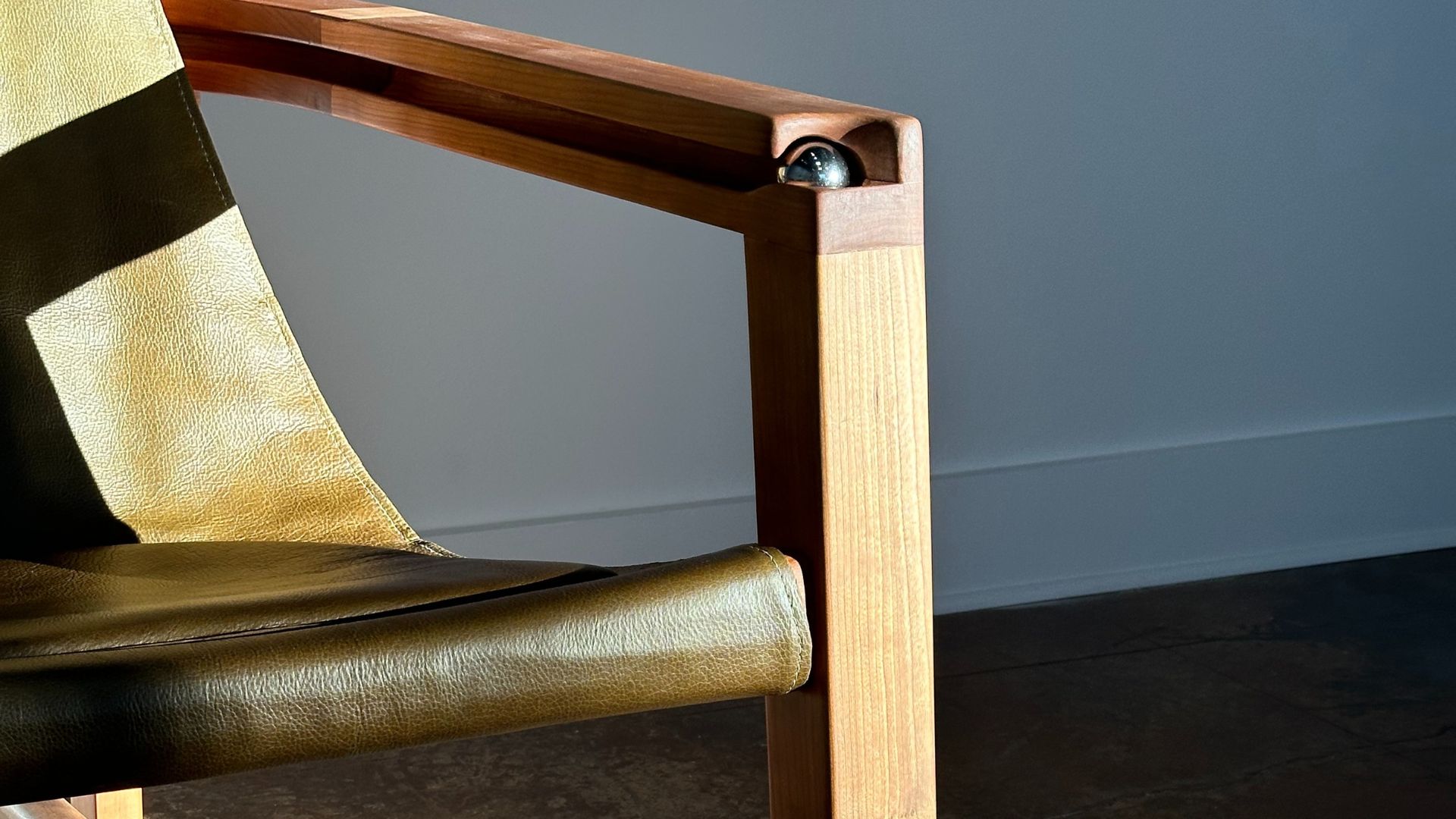
It feels like we're in this passage of time where interior design is far too rapidly evolving, along with other facets of lifestyle, too. And amidst a sea of fads that lack substance, there are some ideations that hold meaning, importance, and style, of course.
If you tiptoe behind the scenes of most iconic furniture, you'll find each design steeped in story and intention. One such nascent mod example is the work of Brooklyn-based architect and furniture designer Tanuvi Hegde. What started as a thesis has turned into a three-piece collection that is catching flowers for all the right reasons.
Titled 'Exhibit (A): Furniture for the Anxious Being', this exhibit features three manifestations of design — Chaos, Reflect, and Release. Crafted to engage your senses and facilitate introspection, this is a crucial reminder that design does, and is meant to do, so much more than just decorate.
I interviewed Tanuvi to understand her drive behind the exhibit and the need for inclusive design in today's interior backdrop, here's everything she had to say.
Furniture for the Anxious Being
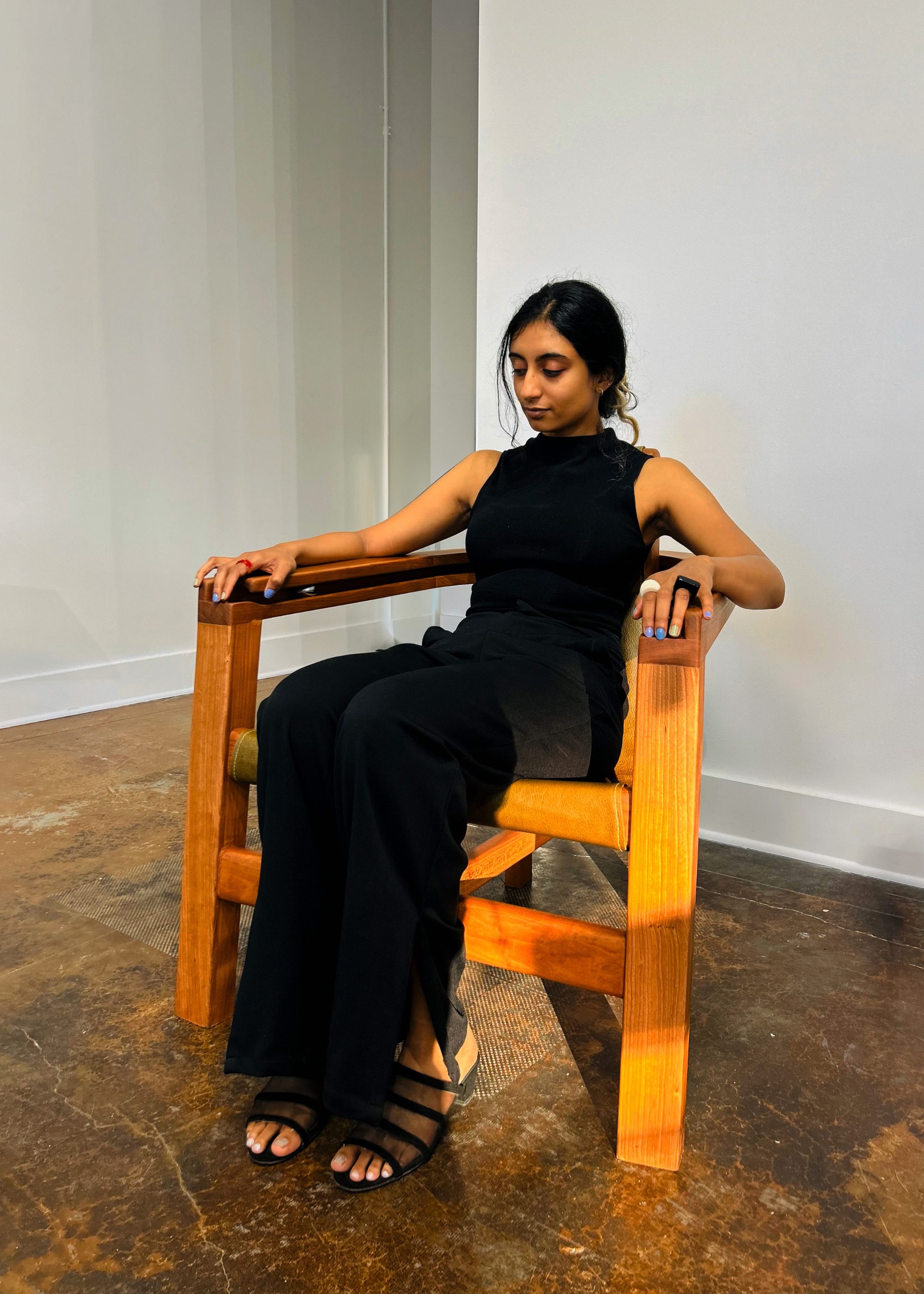
Furniture designer and architect Tanuvi Hegde taking a moment to reflect.
"This collection stems from a deeply personal place — my own experiences navigating my anxieties," Tanuvi Hegde shares. "I wanted to explore how furniture could move beyond function and aesthetics to serve as tools for emotional regulation."
She tells me that the premise was simple but challenging. "Could objects hold space for the invisible weight we carry? Could they soothe, ground, and offer moments of release?" Rather than presenting a linear path to healing, she wanted to embrace the cyclical experience of anxiety in all its honest ruggedness. "Sometimes manageable, sometimes overwhelming, but always in motion," she says.
Each of Tanuvi's interpretations of modern interior design, in what she likes to call therapy furniture, takes on a new meaning, entices the human senses, and was born out of a personal need.
The Livingetc newsletters are your inside source for what’s shaping interiors now - and what’s next. Discover trend forecasts, smart style ideas, and curated shopping inspiration that brings design to life. Subscribe today and stay ahead of the curve.
"For as long as I can remember, anxiety has been a quiet undercurrent in my life, sometimes subtle and sometimes all-consuming. Over the years, I developed small coping mechanisms almost instinctively," she explains.
"Be it writing things down to get them out of my head, engaging in small repetitive motions when my thoughts felt stuck, finding comfort in organizing or sorting when everything felt chaotic. These gestures weren’t solutions, but they offered temporary relief in moments of overwhelm."
When she began thinking about her thesis, she kept coming back to the question: What would it look like if furniture could support those quiet rituals? What if it could participate in the process of managing anxiety, not just exist around it?
"It was important to me that each piece felt sincere, not performative," she notes. "I wasn’t trying to solve anxiety or make a spectacle of it, but to offer quiet companions. Objects that allow introspection, that encourage touch, that participate in a kind of emotional choreography."
Chaos

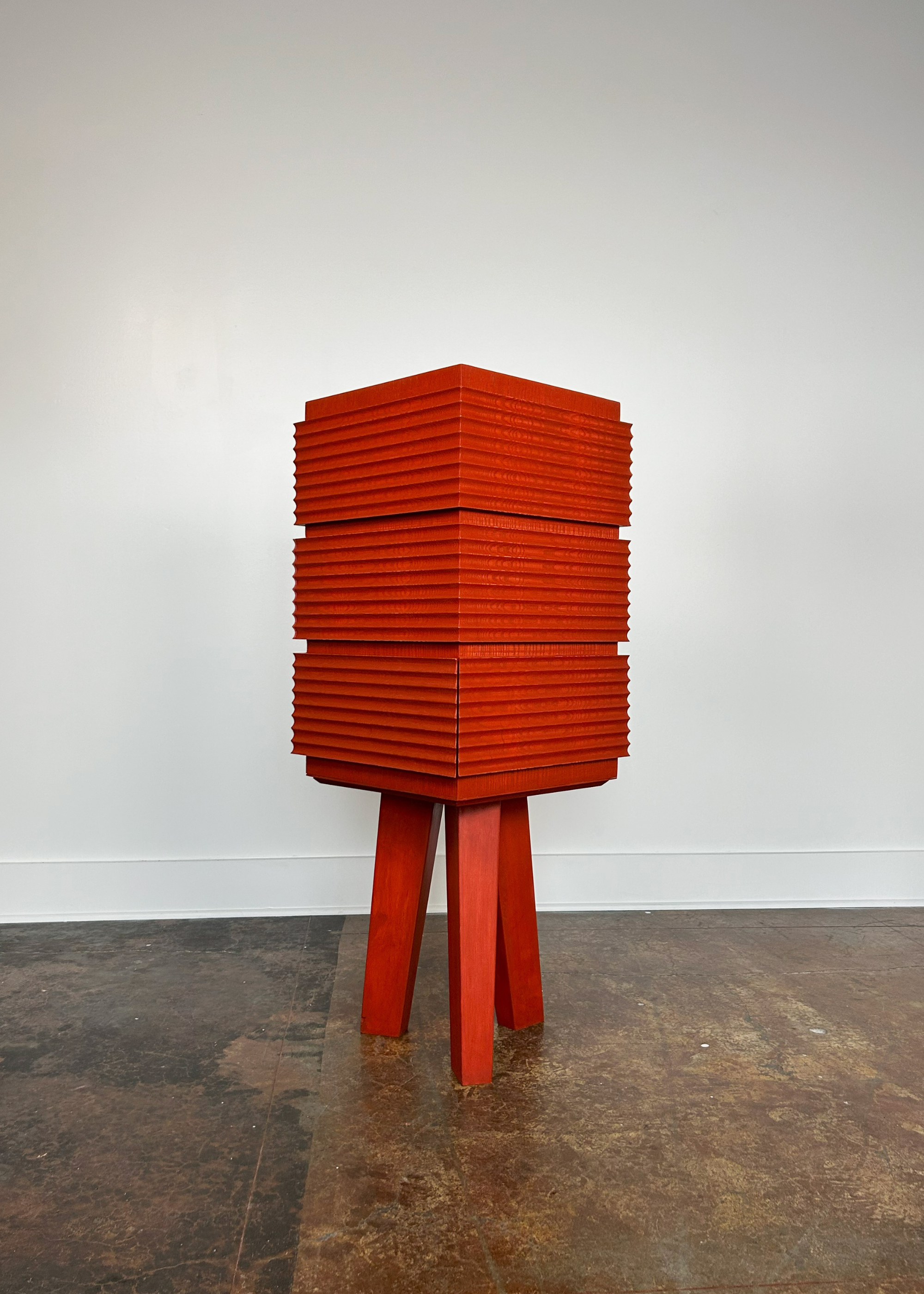
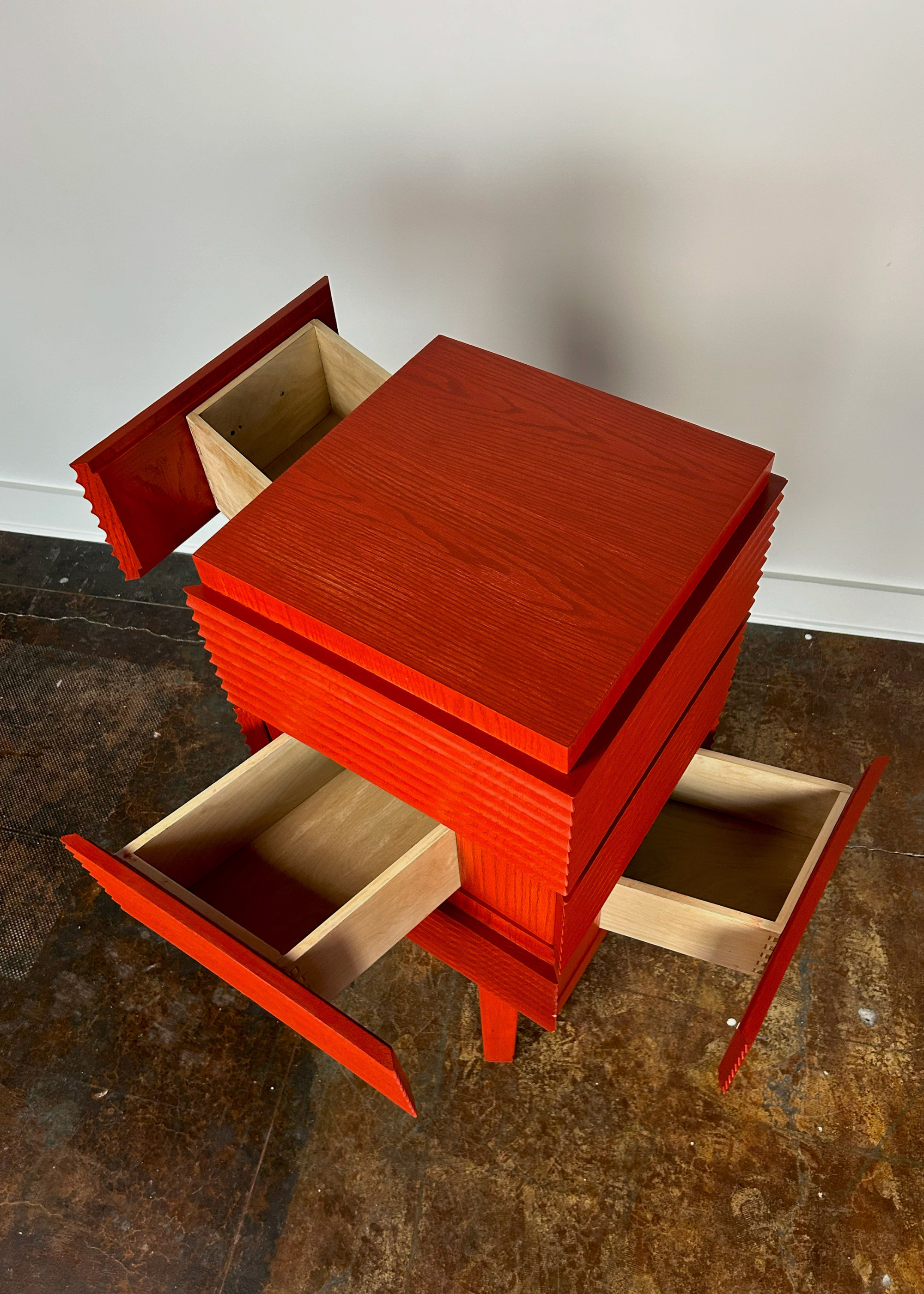
The first piece of furniture in her exhibit, labelled Chaos, is a sculptural drawer system that captures the feeling of mental clutter and confusion. And let's just say, it's not your typical household storage. "Each box is identical in form, stacked uniformly, but opens in a different direction," she points out.
"The drawer front does not have any knobs or visible clues to guide the user. The interaction is guided by uncertainty; drawers reveal themselves only through touch, requiring fingers to trace the underside until they find a hidden groove. Therein lies the subtle cue that allows the drawer to slide open."
She explains that what begins as a disorienting experience slowly unfolds into a discernible logic, mirroring how anxious thoughts can feel scattered yet often follow recognizable patterns when examined closely.
"The piece transforms the subconscious habit of opening a drawer into a deliberate act," she says. "One that demands presence, curiosity, and a heightened awareness of one’s surroundings."
Reflect
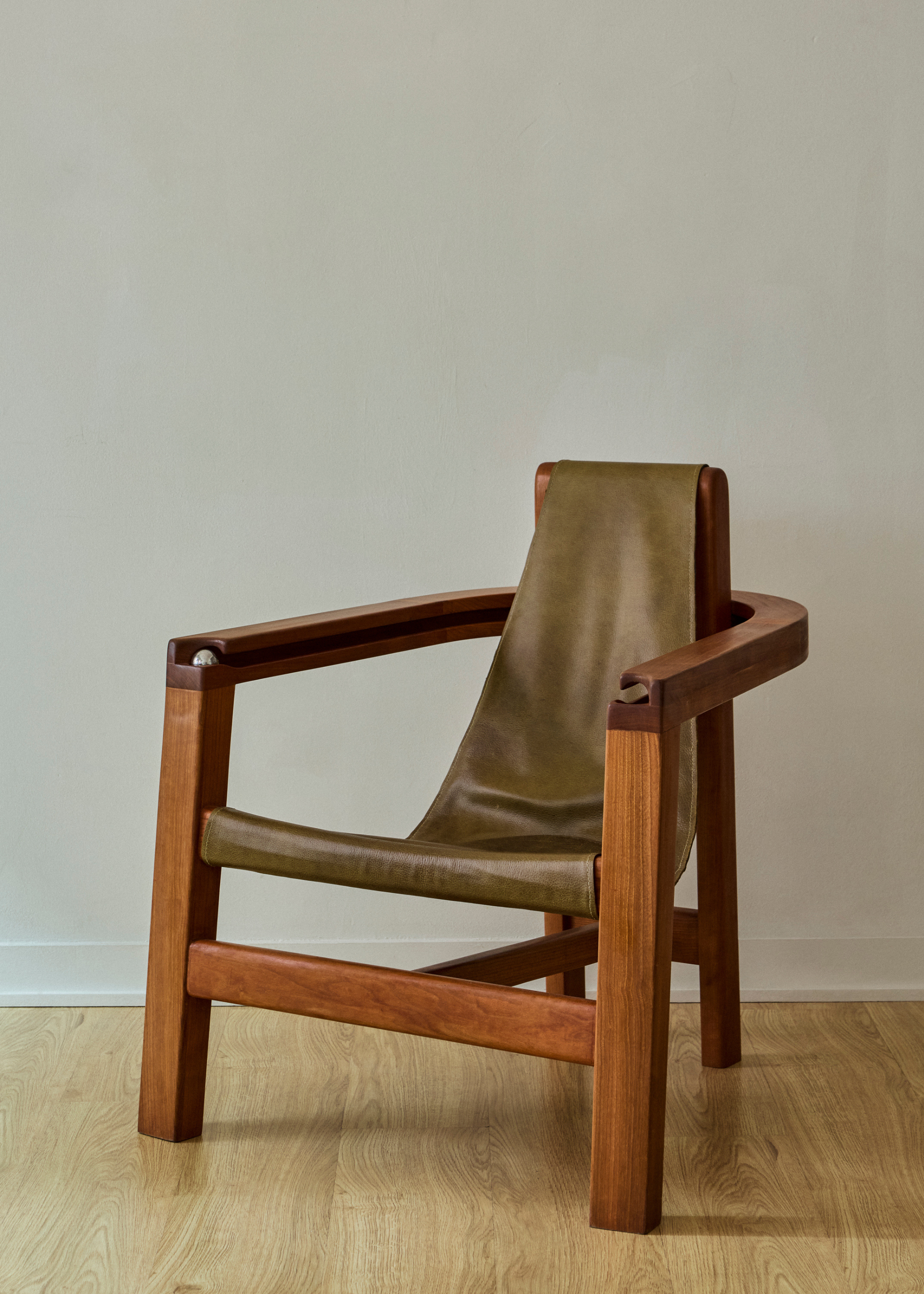
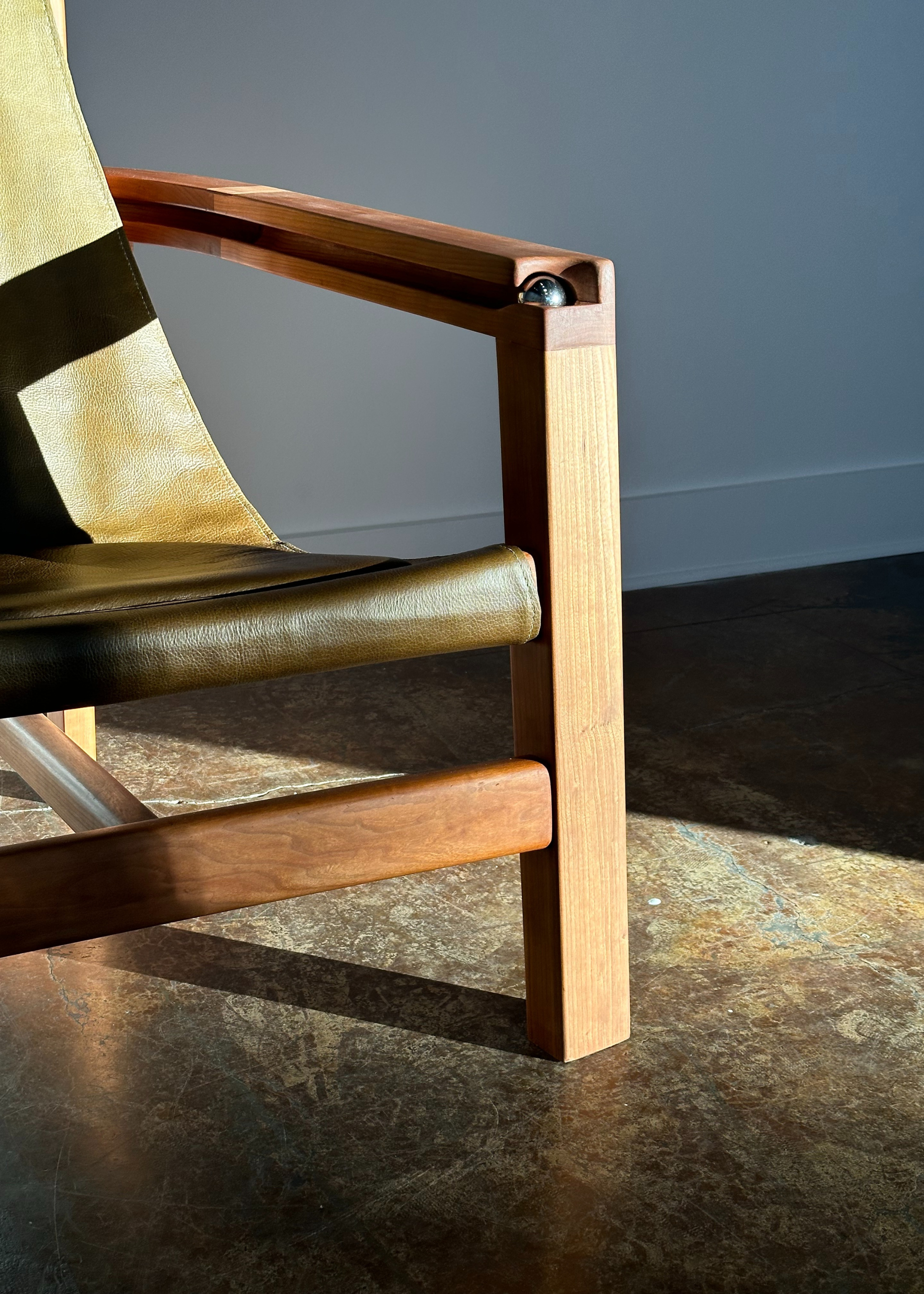
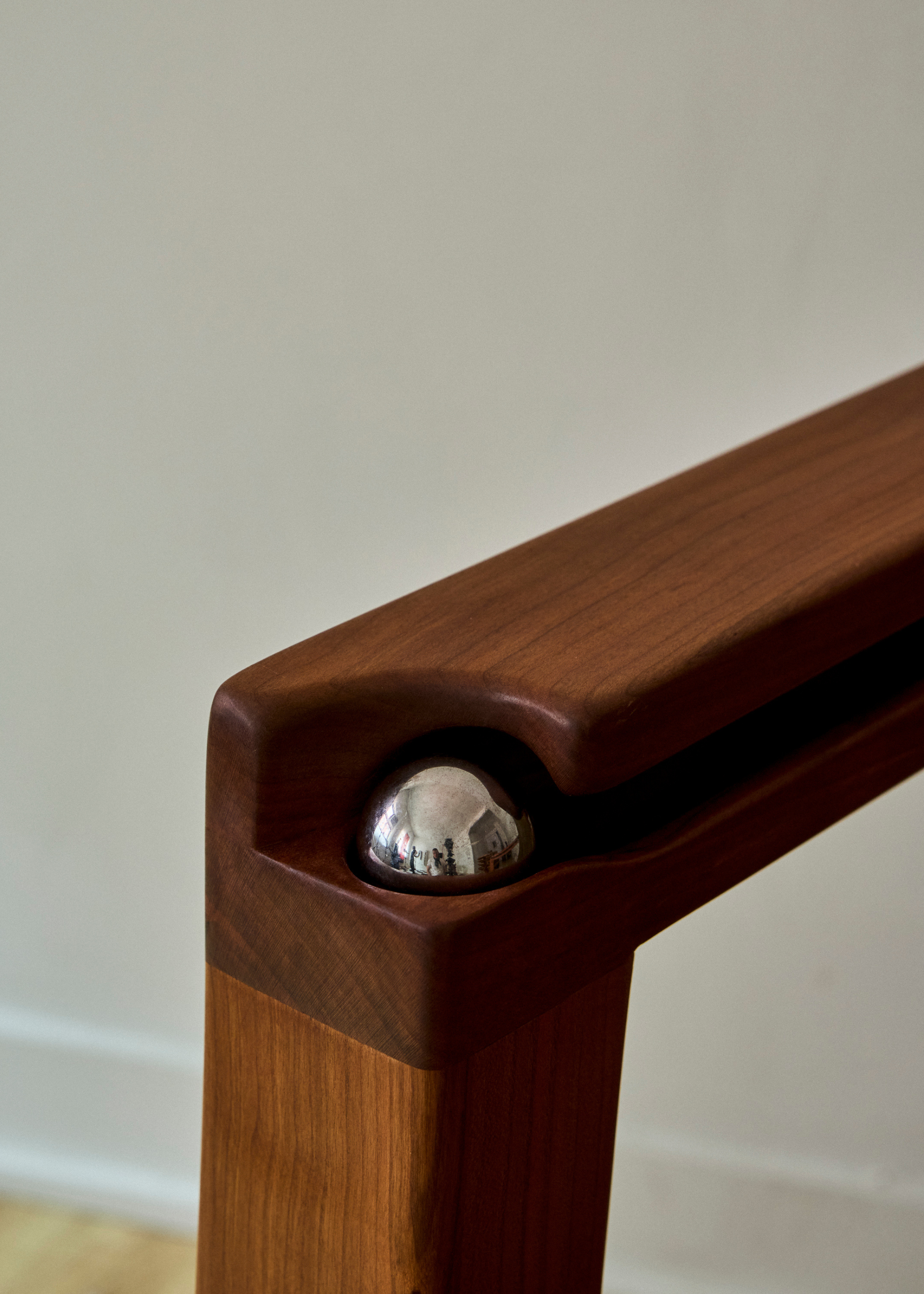
Secondly, and what originally caught my attention and encouraged me to seek out a conversation with Tanuvi, is Reflect. Crafted from cherry wood, this accent chair is inspired by the act of fidgeting.
"With a hand-stitched leather sling and seat cushion, the chair features a steel ball bearing set into a channel carved into the armrest. This simple detail invites tactile interaction, using movement and sound as tools for mindfulness," she notes.
"As the user rolls the ball, subtle vibrations and sound envelop them, enhancing the sensory experience and transforming the chair into an active space for reflection and relaxation. This meditative quality challenges the traditional stillness expected of furniture, instead embracing motion, play, and emotional support."
Speaking as someone who happens to fidget in most social settings, with curling and uncurling fists, fingertips forever drumming, knees bobbing, or even just subtle shifting, this piece intrigued me the most for it's something I would never have considered but now can't seem to shake the thought of.
And while I was never one for toy-like spinners, push panels, and even sensory pens, I have found myself admiring the more modern materializations like the layered Spinelli Kilcollin rings and elegant fidget furniture like this.
Release
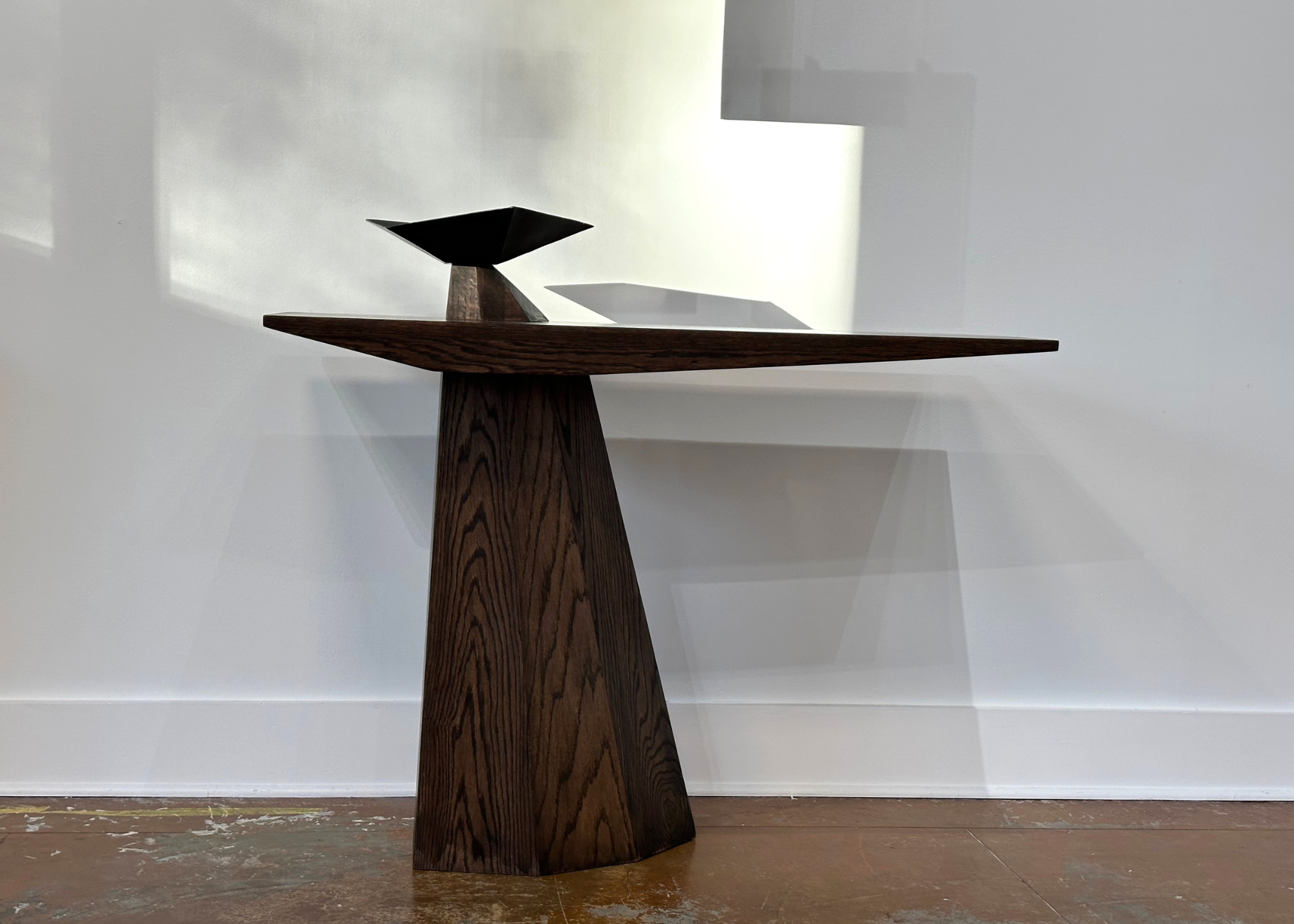

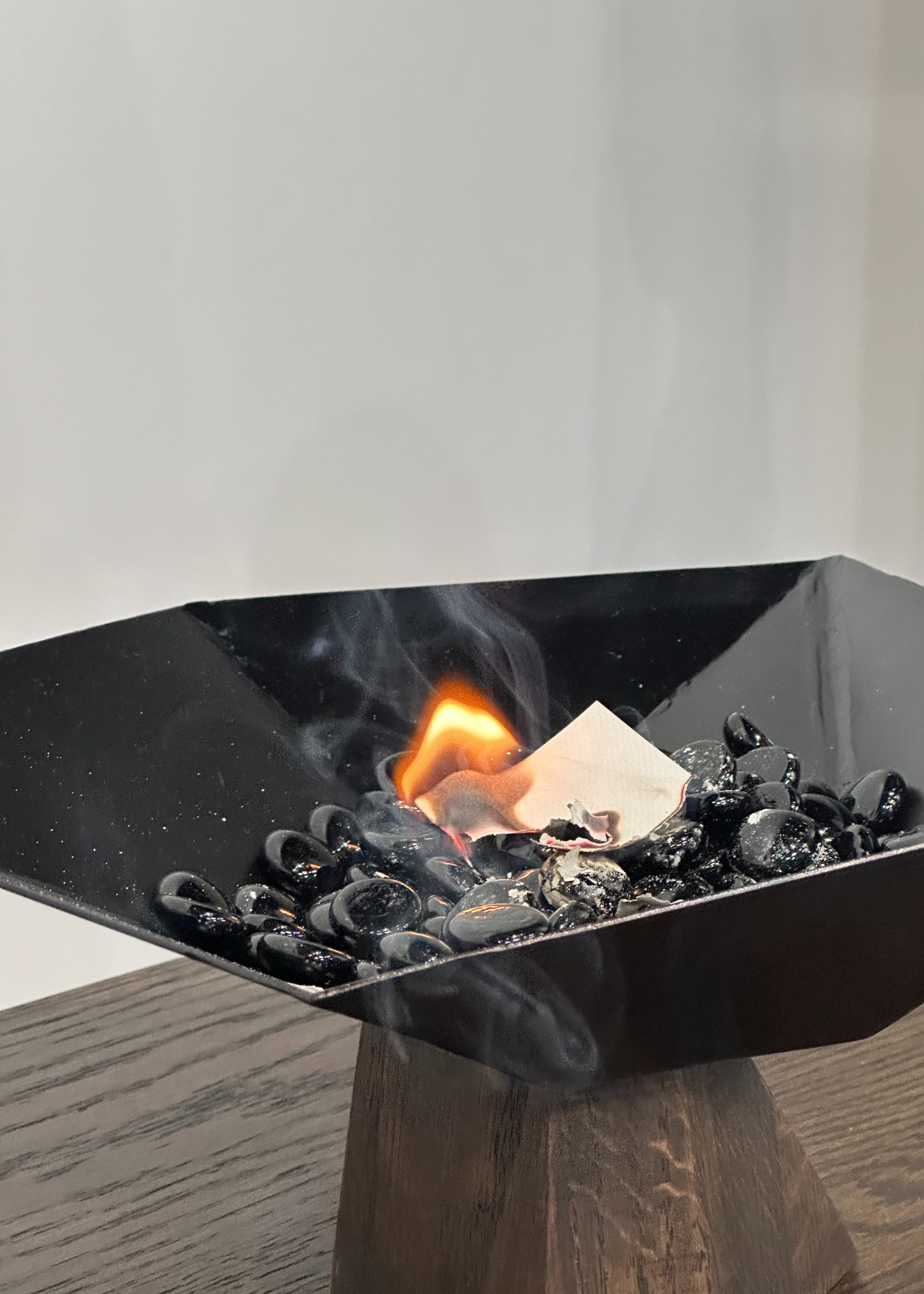

And the last member of Tanuvi's collection is Release, a writing table with a geometric burn bowl inspired by ceremonial fire rituals. "It’s a place to externalize internal weight," she tells me.
"Designed to allow only one person to sit, the user is invited to write down a thought they wish to let go of and burn it in the bowl. The table’s cantilevered form points upward, its angled leg guides the eye toward the burn bowl, signifying a gesture of offering and release."
She explains that this piece turns a private emotional process into a physical, intentional act of letting go. Just as many people practice 'abundance rituals' like saging your home, this sleek red oak table acts as an accessory to your moment of release.
The Importance of Sensory Play and Comfort in Design

More than just a chair.
"There's a growing awareness around designing for a broader range of abilities, needs, and experiences, which is essential given the diverse cultural landscape we live in today," Tanuvi tells me.
She continues, "That said, I wouldn't specifically label my own work as inclusive design. My focus is more on sensory play in a world that’s overwhelmingly visually dominant. It’s more of a response to the overstimulation and saturation of visual content that surrounds us — scrolling, swiping, consuming. This constant visual engagement can desensitize us to other modes of experiencing the world."
Through her work, Tanuvi tries to shift the focus back to the often overlooked senses of touch, sound, rhythm, and movement. "I’m interested in how furniture and objects can quietly invite interaction, encourage grounding, or offer moments of pause. In that way, I think it speaks to the current cultural demographic. There’s a craving for slowness, for presence, for something that feels real," she notes.
"And while it’s not designed to be inclusive in a traditional sense, this kind of sensory engagement can unintentionally create access points for people who experience the world differently, whether neurodivergent individuals or those with sensory sensitivities. It’s not about checking a box, but about expanding how design can connect with people beyond the visual."
Another aspect often compromised on is comfort. And whether you're designing a modern living room or any social space within your home, Tanuvi tells me that comfort is the baseline.
"I believe a space should always offer a sense of ease. Practicality and function are crucial, of course, but for me, that’s just the starting point. Beyond that, I place a lot of importance on creating moments of play, such as opportunities for curiosity, interaction, and even surprise," she shares.
"In that sense, I like the idea of the user taking on a more active role. Rather than being a passive observer in a perfectly curated space, you’re in conversation with the things around you."
She tells me that we should be allowed to fidget, to open, to touch, to wonder. That’s why she often embeds interactive or unconventional elements into otherwise practical forms. "Because real comfort, to me, includes the freedom to be curious, to be yourself, and to engage with your environment in ways that feel good to you," she explains.
"So while comfort is essential, I think delight and discovery are what make a space truly come alive. That’s where design becomes more than just problem-solving. It becomes storytelling."
As for what Tanuvi's working on next, she says: "While keeping that sensory core, I’m loosening the rules around what design is supposed to look like or how it’s supposed to behave. I’m staying curious and open and letting that curiosity guide what comes next."
And in your own living space, so should you. Welcome this lesson and reminder to curate your home so it's a space that truly comforts, engages, and excites you. Take inspiration from the interior design trends of the year, but leave room to explore whatever tickles your fancy. Bend the rules and maybe even break them if it means that you've transformed the bones of your house into a dressed space that feels and breathes like home.

Amiya is a Home Wellness Writer at Livingetc. She recently graduated with a Masters Degree in Magazine Journalism from City, University of London, and has lent her words to beauty, fashion, and health sections of lifestyle publications including Harper’s Bazaar and Women’s Health. Her experience as a research analyst has equipped her with an eye for emerging trends. When she’s off the clock, she can be found reading, listening to music, or overanalyzing her latest Co-Star update.